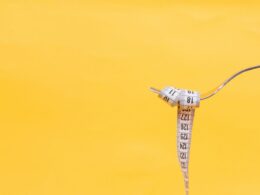During a normal ejaculation, men shoot semen (a milk-colored fluid that contains sperm and nutrients to help sperm survive) out of the penis during orgasm. This fluid comes from the prostate and seminal vesicles.
Many people use the terms semen and sperm interchangeably, but semen is the entire ejaculate and sperm is just a part of it.
Volume
The volume of semen produced per ejaculation is a good indication of the health of a man’s reproductive organs. However, it doesn’t necessarily indicate fertility levels. That’s because there are other important considerations such as sperm count and motility.
Men typically produce anywhere from 1.5 to 5 ml of semen (about 1/4 to 1 teaspoon) during an ejaculation. This fluid comes from the seminal vesicles, prostate gland and epididymis.
Just before ejaculation, the testicles and epididymis release alkaline fluids that protect sperm. Once ejaculated, the sperm are pumped out of the penis through a tube called the vas deferens into the urethra, which carries it away from the body.
Once in the urethra, sperm are released into the fallopian tubes where they may encounter an egg waiting there to fertilize it. But the journey is a tough one and only a few sperm survive the journey to reach their destination. That’s why many sperm are released during an ejaculation – to ensure that at least some of them will make it.
If a man produces less than a third of a teaspoon of semen during ejaculation, it could be a sign that something is wrong. This might be a normal age-related decline, or it might be a sign of a condition such as diabetes or low testosterone (also known as hypogonadism). The cause of the low semen production would need to be assessed by a doctor.
Concentration
When a man is orgasming, the semen he produces will contain a variety of substances that aren’t necessarily sperm. These include mucus-like secretions from the bulbourethral and urethral glands, and also from the prostate gland. These will pass first before the fluids containing sperm, which are produced in the seminal vesicles, are released. During the ejaculation process, these lubricating fluids liquefy and are then squirted out through the penis. Generally, a semen sample will contain anywhere from 1.5-5 milliliters of liquid. This volume is the basis for calculating the concentration of sperm, which is calculated with a counting chamber (hematocytometer).
Concentration refers to the number of sperm per volume unit, and is typically expressed in millions of spermatozoa per milliliter of semen (millions of sperm/ml of semen). It can be measured at most clinics or at home with a sperm analysis kit that includes a special container that you use to collect your semen.
Another important aspect of a semen sample is the percentage of sperm that are motile. Generally speaking, more than 50% of the sperm should be moving in a normal forward movement. The combination of a high concentration and motility is what determines whether the semen is considered “normal.” A low sperm count with no apparent reason for it, on the other hand, could indicate a blockage in the seminal vesicles or oligospermia.
Motility
Sperm cells are such marvelous little wrigglers, with so many weird and wonderful facts attached to them. They may not be the most exciting things to talk about, but they are very important for fertility.
The most common test for sperm is a sperm count. A sperm count is simply the number of sperm per milliliter of semen. Other tests include sperm concentration and motility. Concentration is the number of sperm per mL, and motility is the percentage of sperm that are actually moving. The morphology of a sperm is also analyzed.
When a man ejaculates, he releases 2-6 ml of seminal fluid (or semen). The average amount of semen released contains 600 to 450 million sperm. The volume of a man’s ejaculate is affected by several factors, including the length of time since his last ejaculation, diet (such as oysters and pumpkins), testosterone levels and stress.
Although the sperm counts of men decline as they age, it is possible for men to continue making sperm throughout their lives. However, the quality of that sperm decreases with age. Various lifestyle changes, such as increasing exercise and improving the diet, can help improve a man’s sperm count and motility. However, a man should consult with his doctor to determine the best course of action for him. The doctor can then prescribe any necessary supplements or medications that may be needed.
Morphology
The sperm cells are tiny and have three components: the head, the middle piece or body and the tail which helps them swim from the penis to the female uterus. A sperm cell’s goal is to fertilise an egg and for this it has to pass through the woman’s three lines of defence: she passes a chemical message that is impenetrable; the sperm uses chemicals from its own acrosome to break into the membrane and finally, with luck, a single sperm can reach the egg. This is quite an achievement when you consider that out of the 40 to 300 million sperm produced, only one will achieve this.
Sperm morphology is one of the key factors that are examined in a semen analysis test to assess male fertility along with sperm count and sperm motility. The sperm morphology is evaluated by a laboratory technician using a microscope.
The test is called Kruger Strict Morphology and involves critically looking at 300 sperm in each sample. The sperm are held up to an archetypal “perfect sperm” shape and if any of the 300 sperm do not match this perfect shape, then they are considered abnormal.
In the past 15% of sperm morphology was considered normal but there has been a downward trend in this and currently, WHO 1 states that only 4% is considered acceptable. This may be due to the introduction of strict criteria to evaluate sperm morphology or simply because laboratories are more rigorous in their evaluation.









